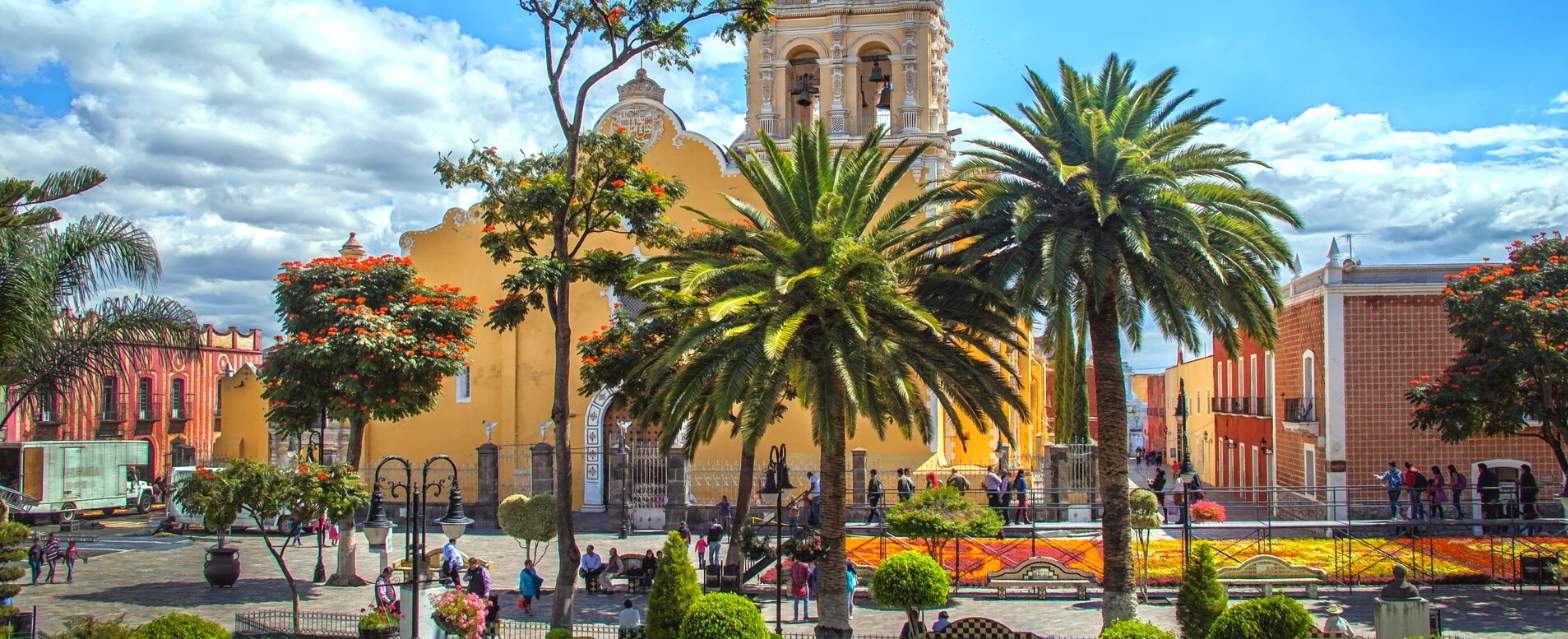I’m going to help you out and share the best places to live based on their popularity amongst new expats in Mexico.
Because I know that when you’re researching where you might want to settle down in Mexico, it can be a little overwhelming if you haven’t toured the whole country, and Mexico is a LARGE country. So to help you narrow it down to a few cities here are 5 of the top places to live in Mexico.
This list isn’t in any particular order. Below are more details on each city:
These are NOT the only places we recommend living in. Mexico is a very large country after all and there are dozens of cities that expats call home. To get a complete list of the cities we recommend living in, check out our Ultimate Guide on Best Places to Live in Mexico.
Mexico City aka Ciudad de Mexico
Mexico’s capital city is home to more than 8 million people. Mexico City, or CDMX to locals, is growing more and more every day.
Out of the over 1 million Americans living in Mexico, about 30% live in Mexico City, which has the largest concentration of American foreigners in the country.
And it makes sense. It’s a large city that attracts people from all over the world for work, business, and investments.
I could write an entire article on Mexico City because there’s so much to cover, but I will keep this one brief. These are some of the reasons Mexico City is one of the best places to live in Mexico!

Learn How to Move to Mexico and Have a Better Life for Less! Check out our Complete Mexico Relocation Guide.
Cost Of Living In Mexico City
Mexico City offers a range of lifestyles, from extreme poverty to some of the world’s wealthiest people. Some areas of the city are so expensive that they’re comparable to Beverly Hills in Los Angeles.
When thinking about your cost of living in Mexico City, it’s important to keep in mind that you can spend a lot of money or live on as little as $10,000/year.
Yes, you can live on very little here, but I want to give you a realistic look into what it costs to live there without living like a peasant:
- 2 Bd/2 Bath apartment in a walkable neighborhood (monthly)- $800 USD
- Utilities (water, gas, internet, electricity)- $80 USD
- Gas for a car (monthly)- $400 USD
- Toll Roads (monthly)- $60 USD
- Mid Range Restaurant (3-course meal for 2)- $55 USD
- Uber (5-mile ride max)- $10 USD
- Groceries (monthly for two ppl)- $400 USD
- Movie tickets (for 2)- $10 USD
- Museum entry fee (2 tickets)- $15 USD- sometimes they are free!
Living like a middle-class family, you can go out to eat, have a lovely house, go out for a movie, and buy quality groceries for about $3,000/month as a couple or under 40k a year.
Weather in Mexico City
Mexico City has two seasons: wet and dry.
At 7,382 ft above sea level (higher than Denver) and closer to the equator than any U.S. city, Mexico City has temperate weather year-round. In the winter months, from December through March, there tends to be a chill in the air, and winds tend to be heavier. The summers are warm, but not to the point of ever needing an air conditioner like Texas.
What is it like to live in one of the best places in Mexico?
Living in Mexico City
Transportation
Mexico City has the busiest airport in all of Mexico and the 15th busiest in the whole world. There are roughly 1,200 flights a day out of Mexico City International Airport (Aeropuerto Internacional Benito Juárez). So, if you want to be in a city where it’s easy to fly anywhere in the world, this is it.
The metro in Mexico City is the second-largest subway system in North America after the New York City metro. Getting around by using the subway is affordable, convenient, reliable, and safe. It’s free for children under the age of 5, and also if you’re over 60.
The starting fare is approx $0.24 for a single ride.
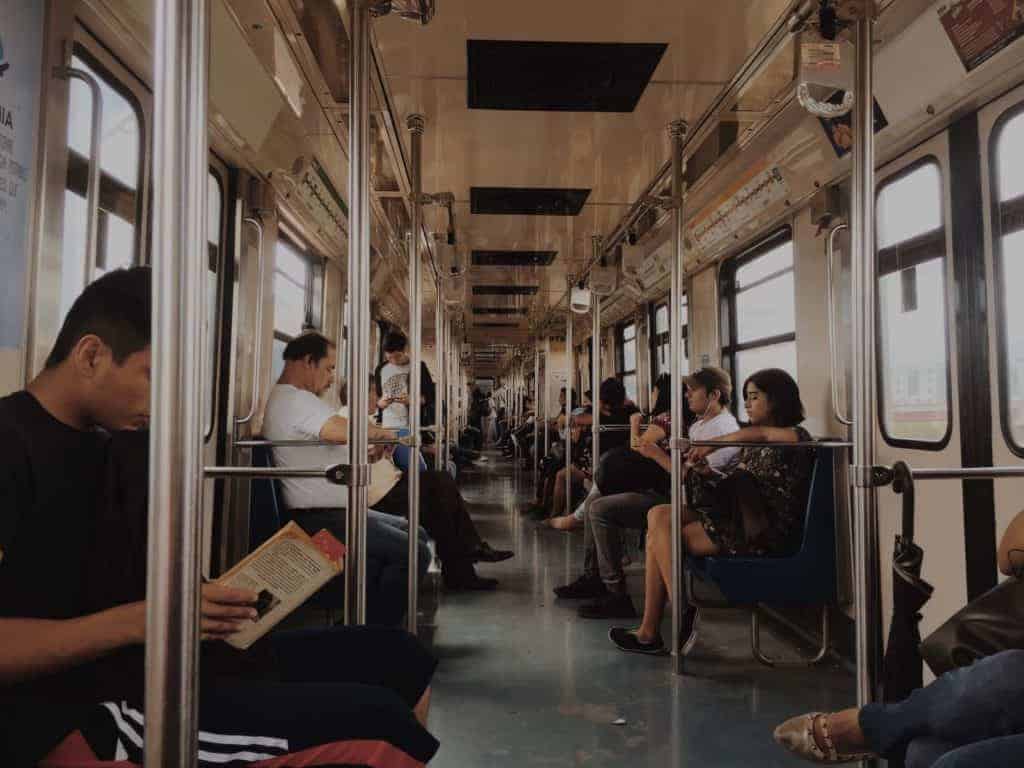
Driving in Mexico can seem chaotic, and I wouldn’t recommend it if this is your first time driving in Latin America. Drivers can be ruthless, careless, and very offensive. But, if you’re adventurous and want to have your own wheels in the city, you have access to a toll road that can make traffic less hectic during rush hour.
The toll road fees start at $1.50, and your car must have a special tag on its windshield.
Embassies and Consulates
There are more than 80 embassies from different countries in Mexico City, so if you’re ever in need of a passport or other service from your home country, you’ll be nearby.
Medical
The hospitals and clinics here are some of the best in the country. Whether you need a specialist or something more simple like dental work, you will easily find your solution in Mexico City. Plus, there are various small private clinics and big modern hospitals, so if you don’t have insurance, you can find something in your price range.
If you don’t speak Spanish, you can find an English-speaking hospital in one of the Joint Commission International-accredited hospitals.
Lifestyle
CDMX has a little bit of everything. It’s the New York of Latin America. If you’re into trendy neighborhoods, boutique cafes, and gourmet restaurants, this is it!
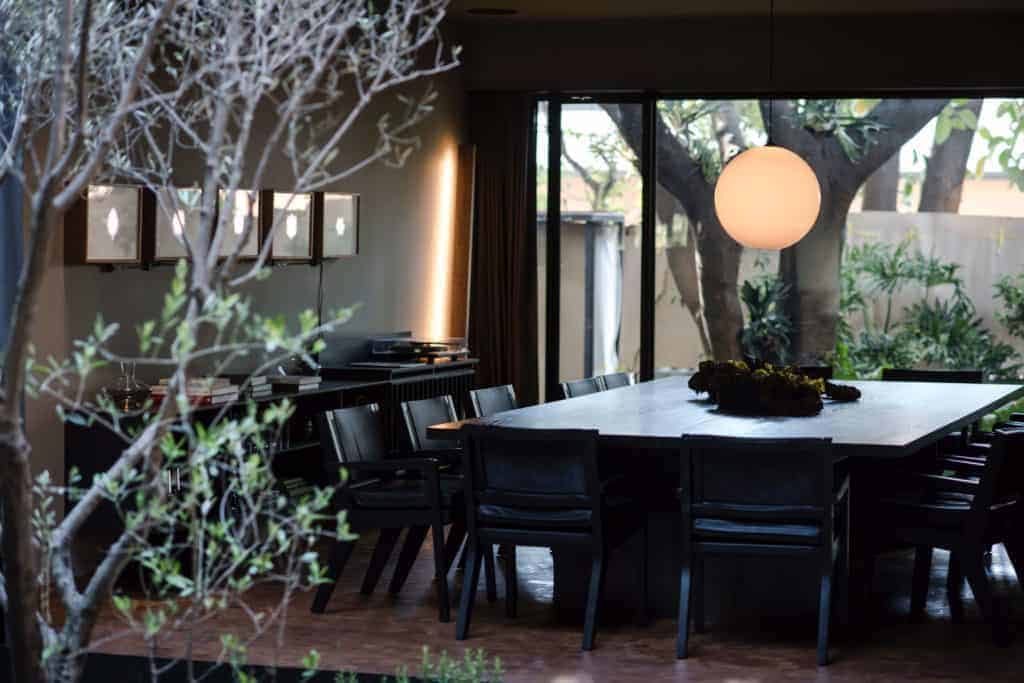
Some of the biggest and most expensive shopping malls I have ever been to are in Mexico City. Their shops are designed to attract the wealthiest people, and you’ll feel like you’re in Milan or Paris. So, If you’ve got money, you can easily spend it here in style.
Overall, this city is full of excitement and energy! My 92-year-old grandfather has lived there for over 40 years, and he has never had a problem with crime. He walks around his neighborhood in the afternoons and drives himself all over the city. So it’s all about knowing what areas to avoid and not being flashy.
However, you’ll also see a lot of the poverty everyone talks about in Mexico City. It’s not uncommon to see unfinished homes everywhere. There are neighborhoods you probably don’t want to live in because they can be dangerous.
FREE MOVING TO MEXICO CHEAT SHEET
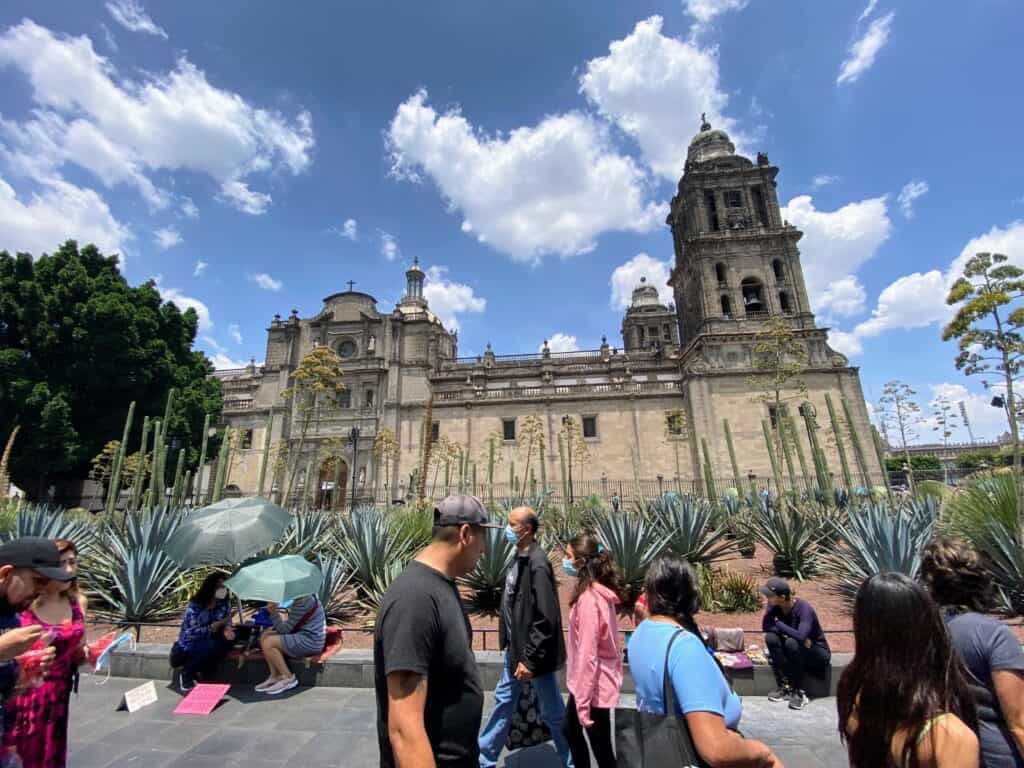
If you’re looking for something a little more laid back but with many things to do; You should consider San Miguel.
San Miguel De Allende
The first time I went to San Miguel de Allende, I really couldn’t believe I was still in Mexico. I had been to colonial towns in the past, but San Miguel de Allende took my breath away.
Cobblestone streets make up most of the city. The colorful houses line the streets with draping flowers on their walls. And the magnificent church in the middle of the square made me feel like I was in a fairytale.
I can see why this is a popular expat destination. It’s charming, small, and incredibly beautiful! But what is it like actually to live there? Here are some reasons many expats agree this is one of the best places to live and retire.
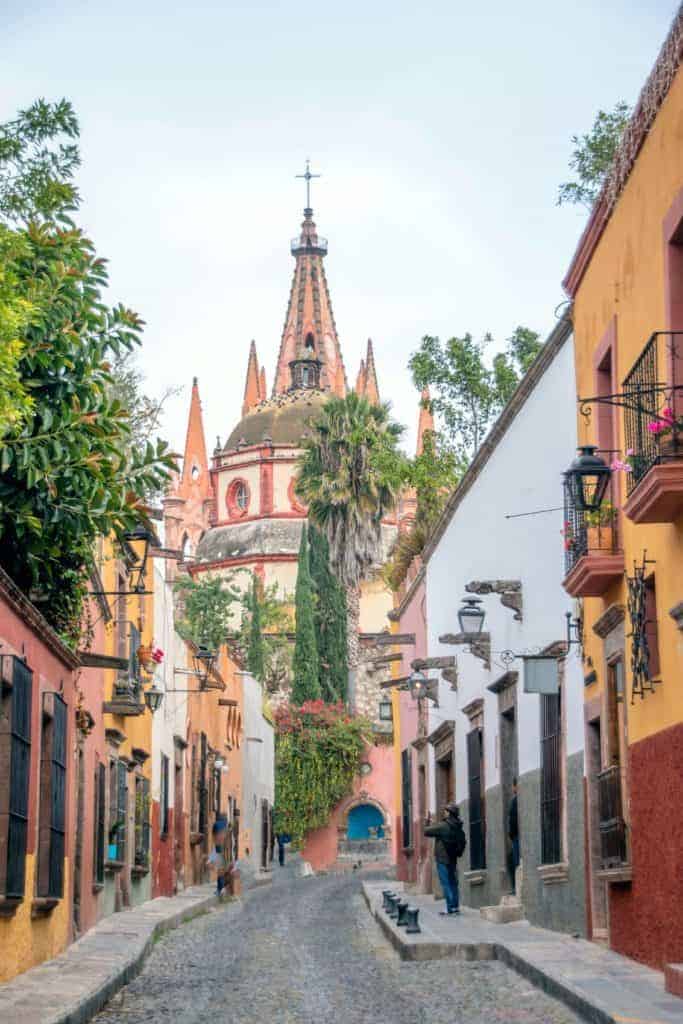
San Miguel de Allende: Popular Expat City
Cost Of Living in San Miguel de Allende
Let’s start out by explaining how much it can cost to live in San Miguel de Allende. It’s not the most expensive city in Mexico (more on that later), but living in SMA isn’t for the ones on a tight budget.
Here’s a quick glance at the cost of living:
- 2 Bd/2 Bth apartment within walking distance to shops (monthly)- $1,100 USD
- Utilities (water, gas, internet, electricity)- $100 USD
- Mid Range Restaurant (3-course meal for 2)- $80 USD
- Uber (5-mile ride max)- $15 USD
- Groceries (monthly for two ppl)- $400 USD
- Movie tickets (for 2)- $15 USD
- Museum entry fee (2 tickets)- $30 USD
Some couples report living in San Miguel de Allende on less than $2,000/month. I’m not saying it’s impossible, but the most significant expense here is housing. Ever since San Miguel became a hotspot for wealthy Mexicans and Americans, the cost of real estate has skyrocketed.
It’s realistic to expect that a couple can live comfortably on $2,000-$2,500/month.
That budget would allow you to have a comfortable two-bedroom apartment in the center of town, fully furnished and with an American-style kitchen. You can afford to go out for dinner once a week and buy quality groceries. You can even afford a maid once a week.
You can save a significant amount of money by choosing to live in an apartment away from the city center. Considering that San Miguel is relatively small, you can walk almost anywhere if you’re up for the fitness challenge. (SMA is very hilly)
Weather in San Miguel de Allende
A light jacket and some long-sleeved shirts are all you will ever need to weather the fall and winter cold nights in San Miguel de Allende.
That’s because most of the year, the temperature ranges between 85 degrees and 50 degrees. It rarely ever freezes.
July, August, and September are the rainiest months, and they bring a pleasant coolness to the hot air in the evenings. San Miguel is also known for beautiful sunsets that highlight the hills surrounding it.
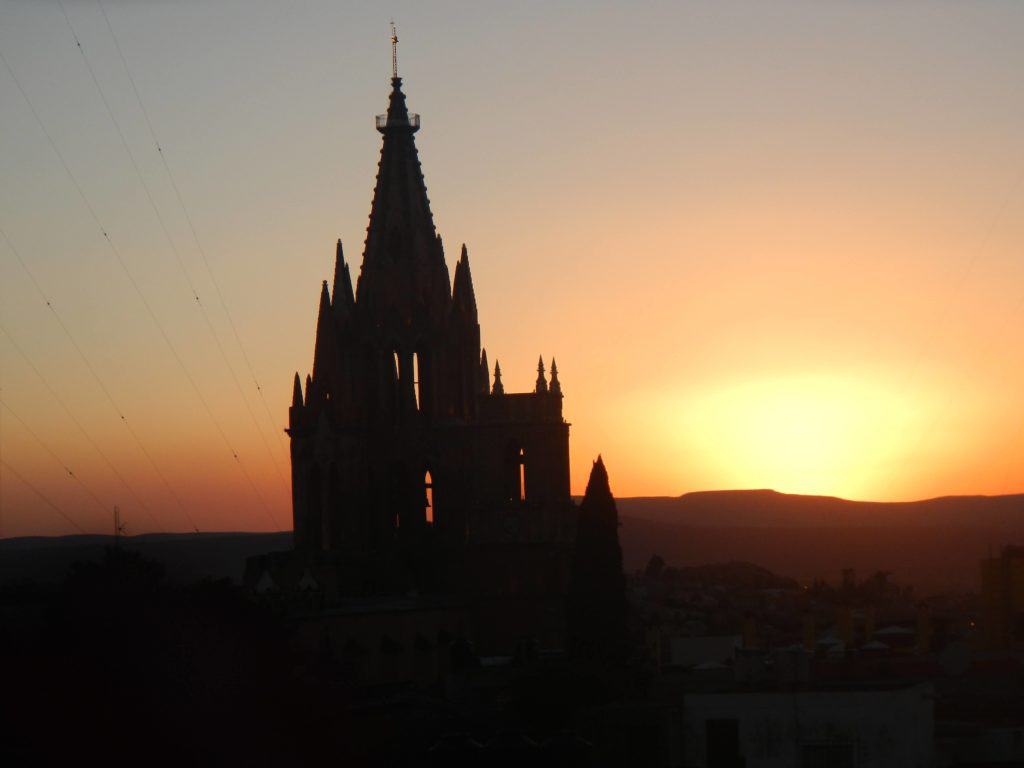
Living in San Miguel de Allende
Transportation
San Miguel de Allende is small enough that most people walk everywhere. However, there are many hills, making for some tight calves if you’re not used to it. Uber is widely available here for longer distances or if you don’t feel up for the challenge.
Traveling to the neighboring cities surrounding San Miguel, like Queretaro and Guanajuato, is relatively common and accessible. There are very comfortable buses leaving from the central bus station every 30 minutes. You can take one of many lines directly to the airport.
Queretaro is the nearest International Airport, about 1 hour and 40 minutes away. There are direct flights to and from Houston, Dallas, Chicago, and Los Angeles. Otherwise, there is a small domestic airport in Leon, about 1 hour and 30 minutes away.
Parking in San Miguel de Allende can be challenging. Usually, the space between two cars is minimal. And, the narrow streets don’t give you much wiggle room to make turns. If you’re planning on owning a car in San Miguel, you’ll use it mostly to go to the grocery or for bigger purchases. It would be best if you embraced walking here.
Additional Reading Moving To Mexico? Read These Tips
Medical
If you need emergency medical care, there are a few hospitals in San Miguel de Allende. Depending on the situation, there are also ambulance services for an extra fee. Otherwise, it is best to take an Uber or a Taxi.
If your situation is not an emergency, or you need to have meds filled at a pharmacy, San Miguel has plenty of outpatient clinics and pharmacies. It’s not uncommon to have a doctor do a house call for non-emergencies and even bring medication, depending on the situation. House calls usually cost around $40. If medicine is what you need, pharmacies can deliver it straight to your home in a matter of hours.
Lifestyle in San Miguel de Allende
Visiting boutique shops and art galleries and eating street food are some of the charms of this beautiful town. This is my favorite thing about San Miguel de Allende. It’s laid back, so you don’t hear the constant honking as you do in bigger cities. Many people get married in SMA, and it’s fun to watch the wedding procession take place with one of the giant dolls made of papier-mache.
You can see so much and do nothing at the same time!
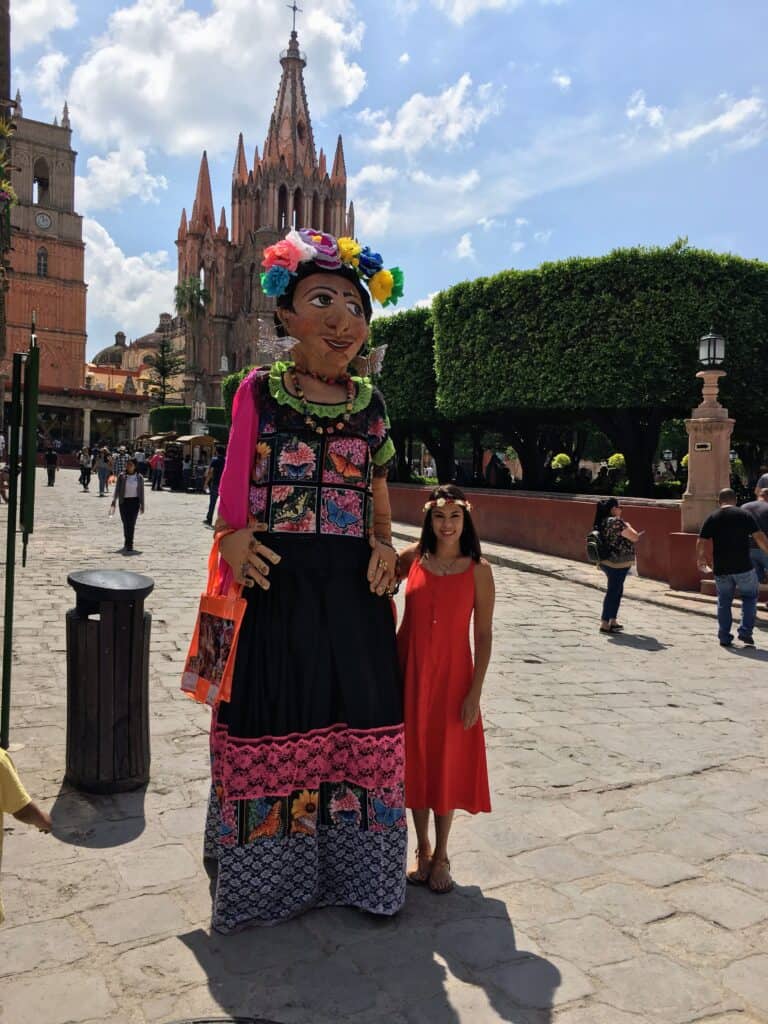
San Miguel de Allende is known for being a culinary hot spot in Mexico. There are restaurants and cafes featuring cuisines from all over the world. It reminds me of Aspen, Colorado, in a way. Most places offer rooftop dining and are decorated as if they are competing to be on a magazine’s front page. What you’ll love is being able to dine at a fine dining restaurant and spend less than $100 for a five-course meal for two. Complete with wine and champagne.
Now, there’s also a variety of street food vendors. Which I prefer. You’ll find the typical quesadillas, gorditas, tacos, elotes, and the best churros you’ll ever have in your life! (okay, that may be just my personal opinion, but that means you have to try them!) Generally, street food is inexpensive and delicious. Just make sure you eat at places that look like they are very clean and have a crowd. Eating at a street food stand will not only expose you to some delicious Mexican snacks, but it’s also very cheap.
Many expats love San Miguel de Allende because there is so much unique art. Art galleries, boutique shops, artisanal food shops, and such are everywhere. Every corner has a unique place, and every business has a unique offering. You really do have to be in San Miguel to appreciate its uniqueness.
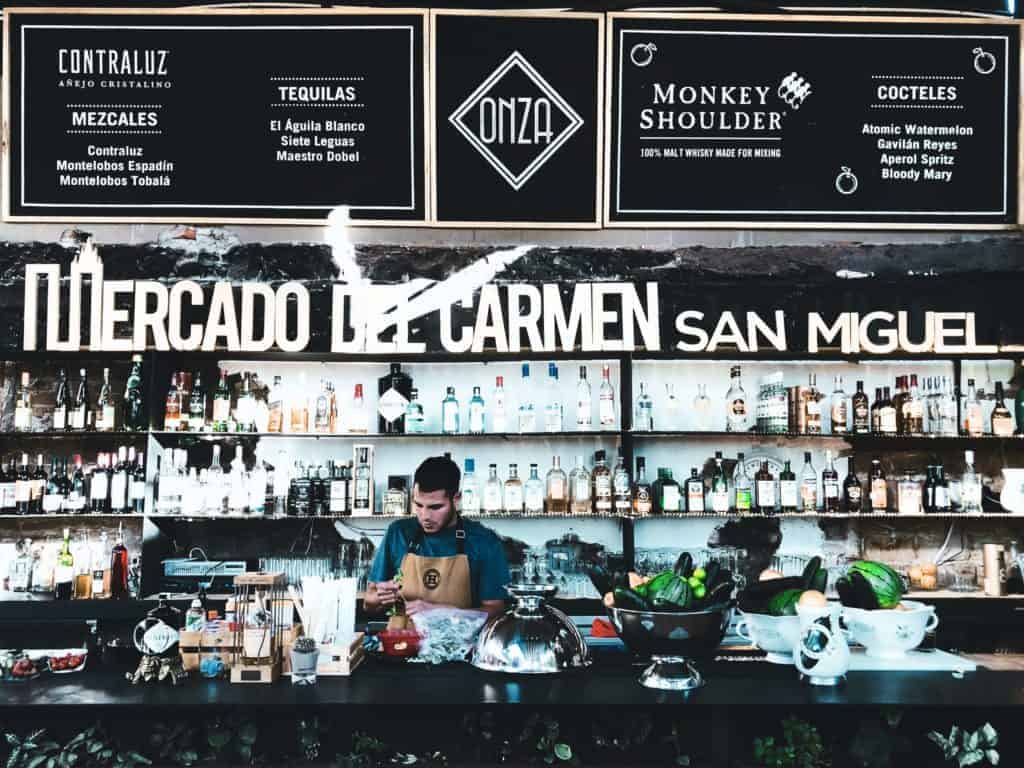
Lake Chapala and Ajijic
Chapala and Ajijic have been popular expat destinations for years. Retirees and expats older than 55 have been coming here for years! Most likely because the weather is spring-like year-round, it’s the largest American expat community, and the scenery is beautiful.
Lake Chapala is Mexico’s largest lake, about 50 miles long. Its surface is shimmery during the day, and its backdrop has some impressive hills. The geothermal activity in this area provides this resort town with relaxing hot springs and baths.
With all the natural beauty and resort-like natural amenities, you can see why Chapala and Ajijic are among the best places to live in Mexico.

Learn How to Move to Mexico and Have a Better Life for Less! Check out our Complete Mexico Relocation Guide.
Cost of Living in Chapala and Ajijic
The cost of living is generally higher in Ajijic than in Chapala. Ajijic is smaller, has a higher demand, and the real estate market is tight. Chapala is bigger in land mass and also in population, but still has a need for rentals. Both places have a competitive rental market, and finding an inexpensive place to rent can be a challenge.
Even with a competitive rental market, you can find a comfortable 2-bedroom house without breaking the bank in either one of these neighboring towns.
To give you an idea of the prices for goods and housing in Chapala and Ajijic, here are some averages:
- 1 Bedroom House in Walkable Neighborhood $700 USD
- Utilities (water, trash, electricity, gas) $150 USD
- Maid (per visit) $30-50 USD
- Groceries for the month (for 2) $350 USD
- Thermal Spa Day Pass $40 USD
- Uber trip (up to 3 miles) $8 USD
- Taxi to/from the Guadalajara airport $35 USD
- Taxi to almost anywhere in Chapala/Ajijic- $4-$8 USD
- Mid-range restaurant. 3-course meal (for 2) $40 USD
- Two Margaritas in a Mid-Range Restaurant $10 USD
Those are just some average prices for some everyday things in the Chapala area. Part of the reason this expat haven has steadily become so popular is the size and weather. Ajijic and Chapala are small enough that you can walk most of the time. That’ll minimize the additional expense of owning a car.
Weather in Ajijic and Chapala
At a constant 77-80 degrees year-round, you won’t have to worry about paying for air-conditioning. You’ll also never have to worry about shoveling snow or sweating your face off in Ajijic and Chapala. The constant average weather ranges between 77 and 81 degrees in the daytime, year-round!
June through October tend to be the cloudiest months. April through June tends to be the sunniest time of the year with very little rain in the forecast.
Living in Ajijic and Chapala
Transportation
Chapala and Ajijic are relatively small towns, so walking or taking the local buses is easy. Unlike San Miguel de Allende, both Ajijic and Chapala are flatter. So you won’t feel out of breath walking to the nearest farmers market or “mercado.”
The Central de Camiones (bus station) is in the center of Chapala, and buses leave every 15-30 minutes. It’s common to purchase a ticket online. If you buy a first-class seat, you can reserve your seat in advance.
You can also buy a second-class ticket, which usually doesn’t have reservations but is cheaper than first-class.
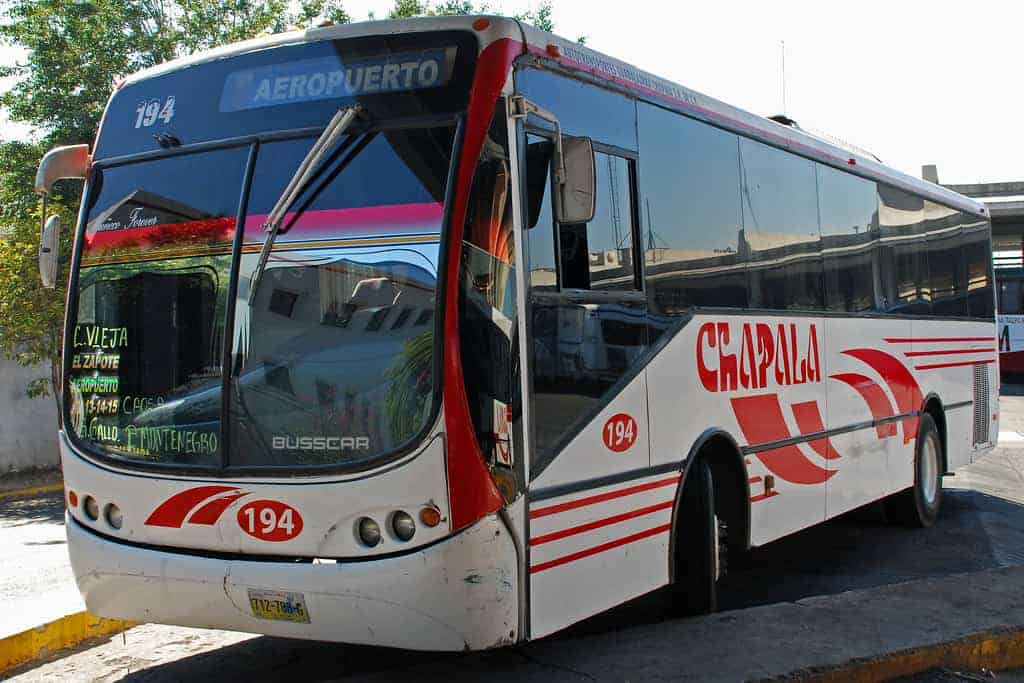
A bus ticket from Ajijic to Guadalajara costs approximately $40-$75 and takes an hour.
If you’re planning to use the local urban bus to get around, the cost is about $0.80, and you have to flag one down from the main road. Currently, there are no timetables online.
The nearest airport is in Guadalajara. It’s the 3rd busiest international airport in Mexico, and it’s only 38 minutes away by car. There are direct flights to San Francisco, Seattle, Orlando, Dallas, Los Angeles, Chicago, Las Vegas, New York, and Phoenix.
There are 4 ways to get to the airport:
- Bus (2.5 hours) $5
- Uber (40 mins) $25
- Taxi (40 mins) $23 + tip
- Driving (40 mins)

Medical
English is widely spoken in many places across Lake Chapala. For example, medical clinics and hospitals usually have English-speaking staff and doctors.
That doesn’t mean you should expect this and not learn Spanish. However, you’ll be pleased to know that you don’t have to work as hard to be understood in this area.
Some of the top medical facilities are:
- Ajijic Clinic (Hospital Clinica Ajijic)
- Hospital San Antonio
- Hospital Ajijic
- Ribera Medical Center
You can also get an excellent dental cleaning and exam in one of Ajijic’s many dentist offices. Cleaning prices are extremely low compared to the U.S. You can get a deep cleaning and teeth whitening for under $50 without insurance.
Dental Express in Ajijic is one of the most popular dentist offices. They offer basic dental cleanings and whitening and have a surgery room for more complicated procedures.
Both Ajijic and Chapala are known to attract retirees and expats over the age of 60. Naturally, it’s essential to ask yourself who can help you when you are no longer able to. This is especially important if you move to any area of Mexico alone.
Luckily, Ajijic and Chapala have world-class assisted living facilities, nursing homes, and, in some cases, even hospice care. Here are some of them:
Although I have never been to one of these facilities or know anyone who has, they have many positive reviews on Google and Facebook. Plus, their fees are reasonable, and their grounds look beautiful.
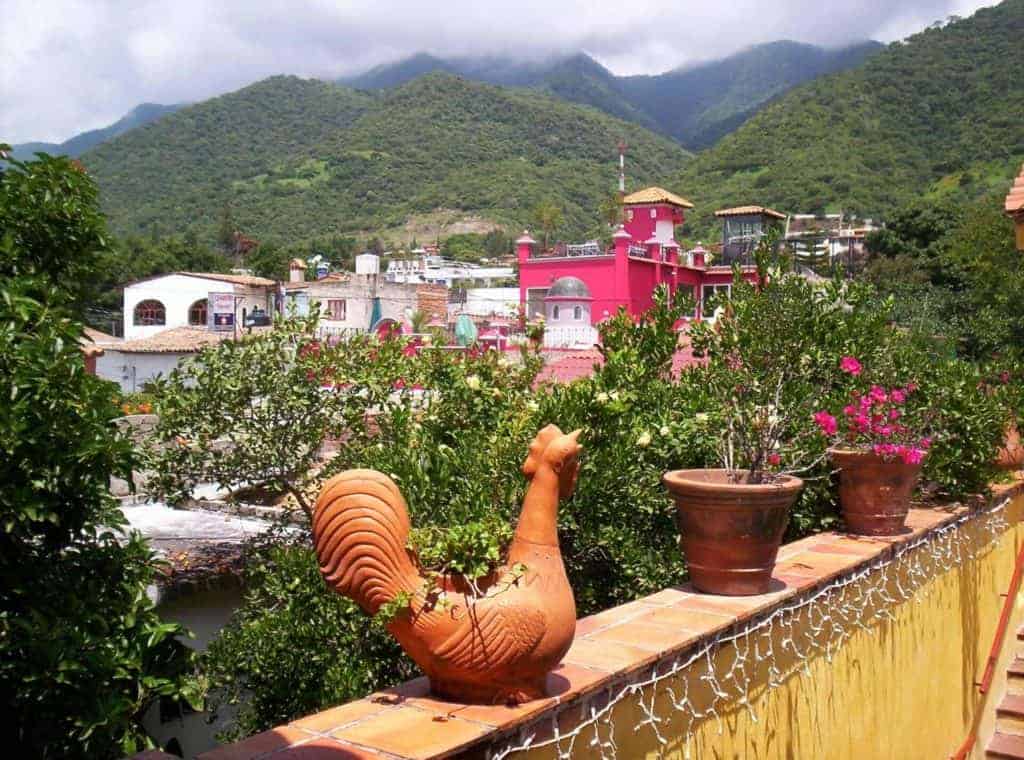
Lifestyle
Chapala and Ajijic are laid back and quiet towns. Most of Mexico tends to be loud and have a constant party atmosphere. Especially during holidays and public celebrations.
However, Ajijic and Chapala seem to be quieter than most other Mexican towns. Possibly because of the culture that many expats have shaped here.
There is also a prominent art scene in Ajijic. Visit one of the many art galleries in town, and you’ll probably become friends with the artist. There is art everywhere, from restaurants to hotels, spas, and especially on the Tuesday Market.
The Tuesday Market was started by a group of American Expats many years ago. Today, it’s a large market where mostly American vendors set up a stand to sell their unique offerings. There’s even an organic section!
This whole area is small, but the community is enormous. People embrace newcomers, and you’ll never feel like an outsider if you don’t want to. There are newcomers get-togethers all the time. So, it’s easy to make new friends here!
Or head 40 minutes north to the 2nd largest city in Mexico, Guadalajara.
Guadalajara (aka GDL)
Guadalajara is the second-largest city in Mexico, has a large expat community, and still feels small enough. It is nicknamed Mexico’s Silicon Valley because big tech giant manufacturing plants call this city home. I believe some of the reasons many people choose Guadalajara are its beautiful architecture, business opportunities, its diverse population, and THE WEATHER!
Even though Guadalajara does see some very hot days in May and June, for the most part, it has some very temperate months almost all year long.
Guadalajara is the land of Marichi, Tequila, and Spanish Architecture. It’s a city that you’ll surely fall in love with. Some of the best hospitals in Mexico are here. And the best medical training program is at the Universidad Autonoma de Guadalajara.
Here are some reasons why GDL is one of the best places to live in Mexico:

Cost of Living in Guadalajara
For many, the cost of living in Guadalajara is what draws them to this tree-filled city. You can live in a modern apartment in the city, have some luxuries like house cleaning weekly, and still live for less than you would in most U.S. cities.
To give you an idea of some expenses in GDL, here’s a brief list.
- 1 Bedroom Apartment $500 USD
- 2 Bedroom apartment in a trendy neighborhood $800-$1,200 USD
- Utilities (water, gas, electric, trash) $60 USD
- Groceries (monthly) for 2 people- $400 USD
- Restaurant mid-range (3-course meal for 2)- $30 USD
- Maid 1x week $5/hr. USD
- Museum entry fee (2 ppl)- $40 USD
- Gym membership (monthly for 1 person) -$25 USD
Similar to Mexico City, Guadalajara’s cost of living is higher because it is a larger city. As a couple, you can live very comfortably at $2,000/month.
This would include luxuries like renting a lovely duplex in a walkable neighborhood in the city, having a maid once a week, and eating out 3x/week.
You can live for less if you move out in the city’s outer parts and don’t splurge on things like house cleaning and a gym membership. A couple could live very well on as little as $1,500 a month.
Learn How to Get Residency In Mexico
Weather in Guadalajara
Guadalajara is on the western side of Mexico. It’s a valley surrounded by hills. The soil is constantly moist because of the humidity in the air.
Look around, and you will see some people wearing jackets in the shade and short sleeves in the sun. Guadalajara’s average temperature is 70-85 degrees year-round. In the early morning, the weather is around 50 degrees and quickly rises with the bright sun throughout the day.
You always know what to expect in Guadalajara as far as the weather goes. From March-June, you can expect the hottest months. Right before the rainy season starts In July. From July to October, you can expect heavy rainfall in the early afternoon. And I’m talking about some of the heaviest rain you’ll ever see. But then the skies clear up, and there’s a coolness to the evening air.
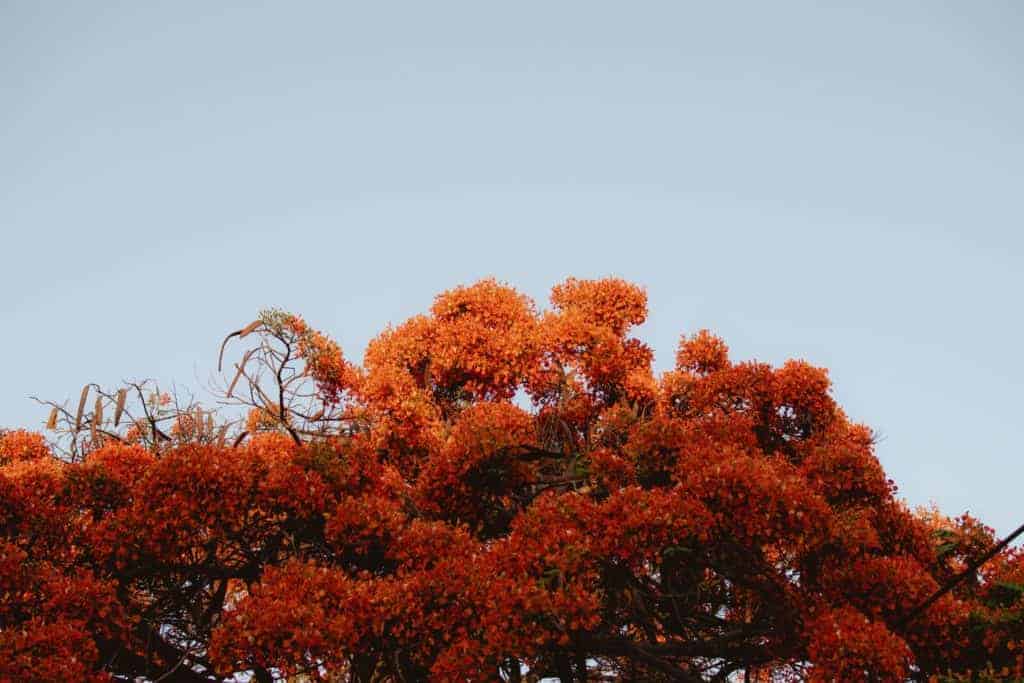
Plus, if you’re a foodie, you can find it all in Guadalajara. I seriously understand why it’s one of the best places to live in Mexico.
Life In Guadalajara
Guadalajara’s infrastructure hasn’t quite caught up with the population growth. Buses can be overcrowded, there is traffic, and it can feel a little bit like New York City at times. But the good news is that the city isn’t terribly large like Mexico City. So, getting around is relatively easy if you follow a few tips.
Transportation
Walking is the best way to get around in GDL. You can find most things nearby unless you live outskirts of the city. Grocery stores, convenience stores, malls, movie theaters, mercados, salons, hospitals, etc., are everywhere within walking distance.
But, if walking is not your thing, there are Taxis everywhere too. You can flag one down on the side of the street or have the number to a taxi station saved on your phone to reserve one at a particular time. A taxi ride to just about anywhere within Guadalajara’s rings can range between $2-$8.
Buses are very straightforward in GDL. They come every 5 minutes and make several stops along the way. They can be crowded, but buses will be your best form of transportation if you don’t mind standing.
Driving can be hectic in GDL. Although relatively simple because the city isn’t too big in land size. You could drive from one end to the other in 20 minutes. It’s 1/10th the size of Houston and is about the size of Santa Fe, NM. The most significant difference is Guadalajara has 5 million people living in a land area the size of Santa Fe, NM. So, traffic can be bumper to bumper.
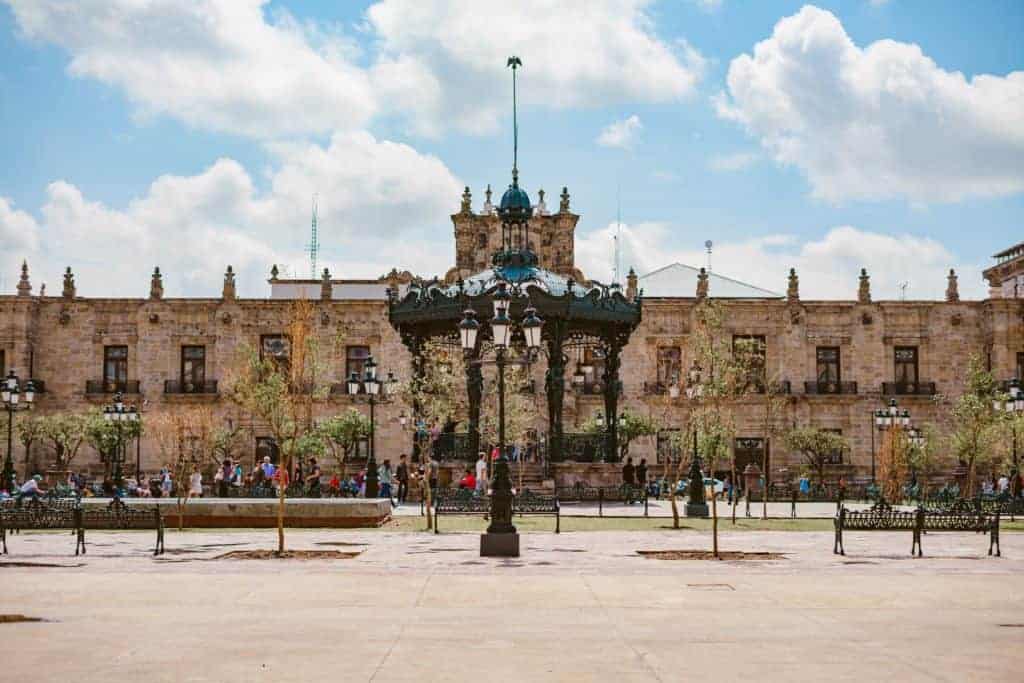
But you don’t have to own a car to be able to get around in Guadalajara. There is also a metro system known as a light rail. It has 2 lines and 19 stops all throughout Guadalajara. The rate starts at $0.40 per ride.
Medical
Guadalajara is the mecca of medical training in Mexico and has some of the best quality and specialized hospitals in the nation. There are various public and private hospitals, and some of the most renowned doctors practice medicine here.
If having quality medical care is a priority for you, Guadalajara is the place to be.
Many people from around the world end up in Guadalajara for medical tourism. One of the most popular hospitals, Hospital San Javier, has first-class emergency rooms, an intensive care unit, and great surgeons on staff.
A regular doctor’s visit without insurance will cost around $40 in Guadalajara. That’s about 80% cheaper than a doctor’s visit anywhere in the United States.
Lifestyle
Like most big cities in Mexico, Guadalajara has a lively main square in the evenings and on holidays. Mariachi was born here, and you can enjoy a live performance on the square on most evenings. Watch people dance with their significant others, or just people-watch while you eat some ice cream.
Because this city is surrounded by nature and forests, you can also do some hiking, mountain biking, and exploring the trails of one of the many parks outside the city.
To explore the city and everything it has to offer, you should visit some of the trendy neighborhoods like:
- Chapultepec
- Santa Tere
- Providencia
- Mexicaltzingo
- Chapalita
- Tlaquepaque Centro
- Zapopan Centro
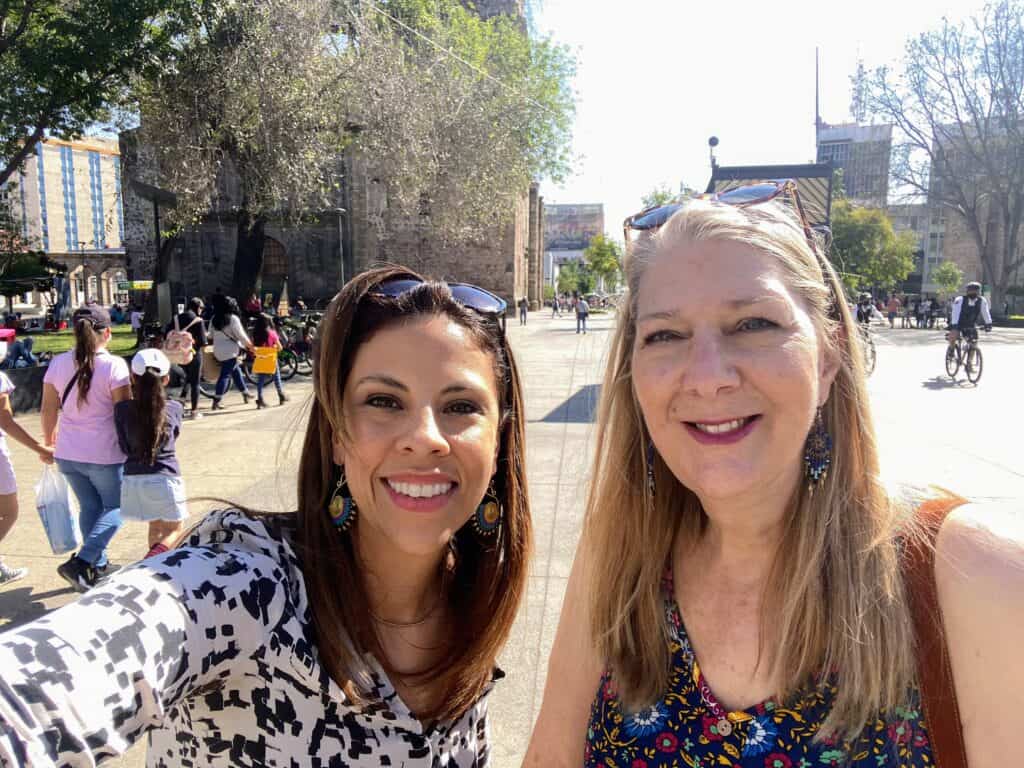
If you want to immerse yourself in Mexican culture, drink Tequila straight from the source, and watch how it’s made, then a trip to the nearby Tequila is a must. You can even take a boutique train directly to the distillery while enjoying some spirits aboard.
Medical, Transportation, Culture, and Weather are reasons why Guadalajara is known as one of the best places to live in Mexico.
Medical, Transportation, Culture, and Weather are reasons why Guadalajara is known as one of the best places to live in Mexico. Plus, there’s a well-known beach nearby….
Puerto Vallarta aka PV
On the Pacific coast in Jalisco state is one of the most famous beaches in Mexico, Puerto Vallarta. Made famous by the golden era of Hollywood actors in the 60s, this once sleepy beach area is now a booming beach resort city.
The nightlife is vibrant, the weather isn’t too hot, there aren’t any hurricanes, and the cost of living is a lot cheaper than any beach town in the U.S. It’s no wonder why Puerto Vallarta is well-known amongst American expats who can stretch their dollar while living in paradise.
But just how much does it cost to live here?

Cost of Living in Puerto Vallarta
Although the cost of living in PV isn’t what it once was before it boomed, it’s still considered to be 50-60% less than almost any beach town in the U.S.
Rentals on the beach are still affordable; you can buy Food with very little money, and getting around on foot is so easy you won’t need a car.
To give you an idea of how much money you’d spend on some everyday things, here are some expense examples:
- 1 bedroom apartment in a walkable neighborhood $650 USD
- 2 Bedroom Ocean View Apartment $1600 USD
- Utilities (water, electric, gas) $100 -200 USD
- Gym membership (1 person)- $30 USD
- Internet (60 Mbps download speed)- $25 USD
- Groceries and Food (monthly for 2 ppl)- $500 USD
- Mid-range restaurant (3-course dinner for 2) $50 USD
- Margaritas at a mid-range bar (for 2)- $15 USD
- Urban bus fare (one-way) $0.50 USD
Living in a beach town has its pros and cons in regard to the cost of living. Many things, like fresh tropical foods, are cheap and found year-round. On the flip side, keeping your apartment cool can quickly increase your electric bill.
For many, the higher cost of electricity to keep their houses cool is enough of a sacrifice to live on a beautiful beach resort with modern amenities.
Weather in Puerto Vallarta
Sun worshippers and beach lovers come to PV for the sun, the excellent fresh seafood, and the constant 80-100-degree weather.
Puerto Vallarta has two seasons: wet and dry.
June-October is the wet season. The average rainfall in these months amounts to 10-11 inches. It can be very humid around this time of year, but the temperature hardly ever gets above 90 or below 60.
The dry season is from November to May. The drier season is partly cloudy, especially in the early afternoon, and there are heavier winds. But again, the temperature hardly ever drops below 50 or rises above 85.
This is a place where you can expect to wear the same shorts and tops year-round. For those who love warm weather and sandy shores, Puerto Vallarta can be the best place to live in Mexico!
What will life be like for you when you live in Puerto Vallarta?
Living in Puerto Vallarta
Walk on the Malecon in PV in the early morning, and you’ll see joggers, early swimmers, surfers, and commuters. Walk around in the evening, and you’ll see bars starting to get half full, lovers taking a walk, and families out for an evening stroll.
The easy-going culture of PV is easy to spot. You will hardly see bumper to bumper traffic. People take their time when they are walking. You’ll hardly see the hustle and bustle of bigger cities in Puerto Vallarta.
This is a place you can come to relax fully.
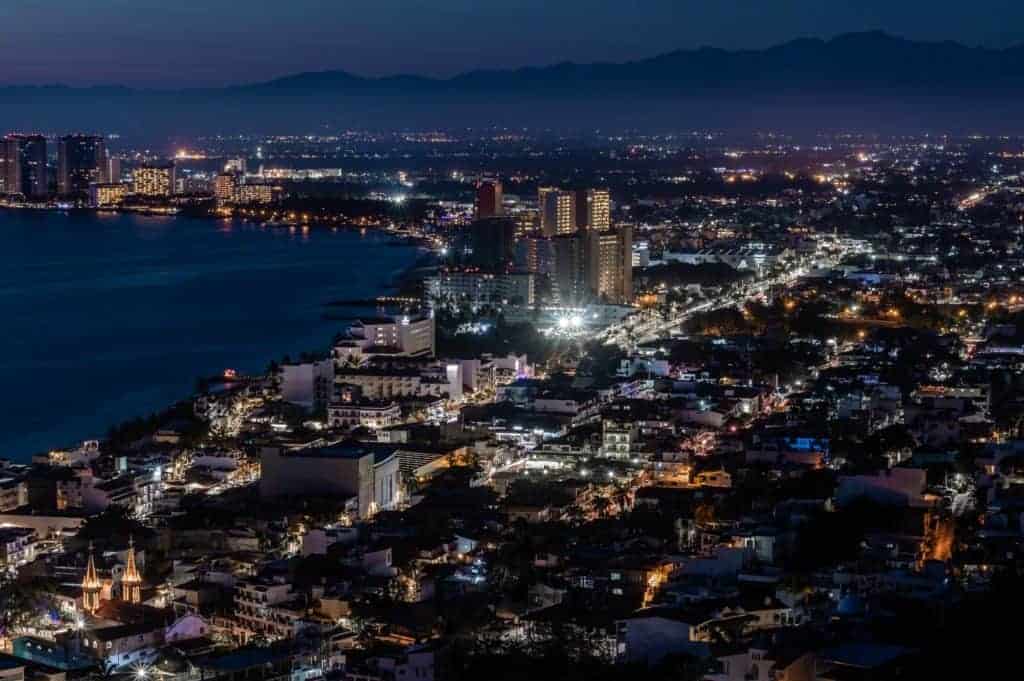
Transportation
Most of Puerto Vallarta is concentrated in a small area near the malecon downtown and the hotel zone further north. You can drive most anywhere in Puerto Vallarta in under 20 minutes.
One thing is for sure in Puerto Vallarta, walking is a regular thing, as is taking the public buses. A car isn’t necessary here.
Buses stop by every 10-15 minutes and, in some cases, every 20-30 minutes. Most of Mexico doesn’t have bus timetables online or printed anywhere. It’s one of those things you have to learn by trial and error. Fun right? But I did find a handy schedule someone made based on their experience. The fares start at 25 pesos or about 1 dollar.
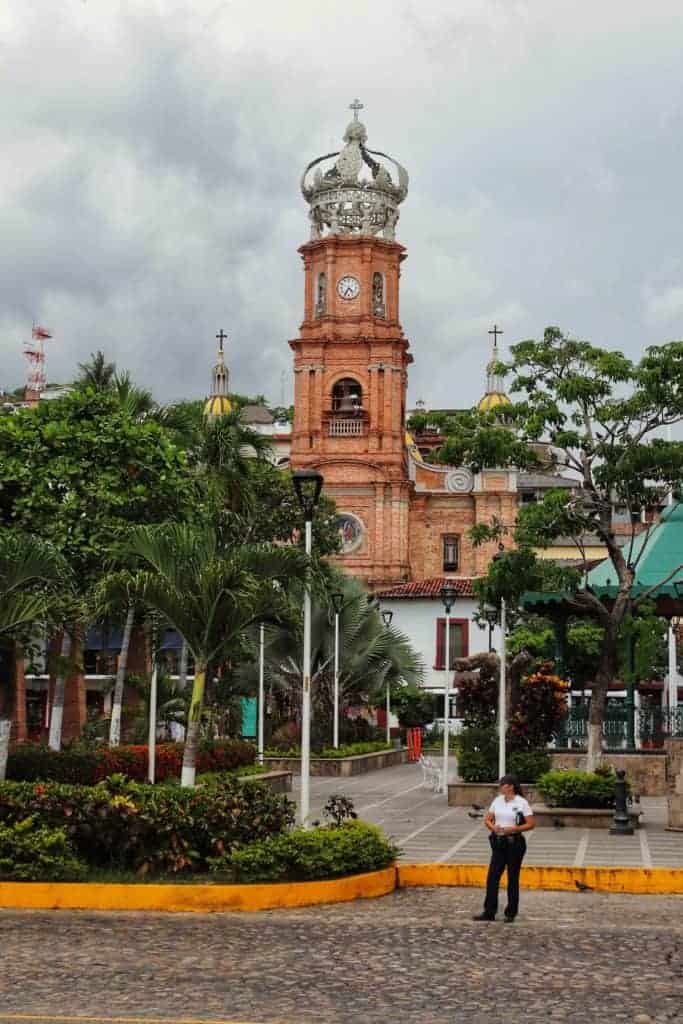
Taxis are also widely available in Puerto Vallarta. To hail a cab, just flag one down. If they’re available, they’ll likely park at the nearest corner. Make sure you ask your cab driver how much they want for your destination. That way, there are NO surprises. If you don’t agree to the fare, let them know, and they might negotiate with you!
When in doubt, get an Uber. Uber is a fantastic tool in Mexico.
Especially if you are concerned with having exact change or knowing enough Spanish to understand the fare. I can’t recommend Uber enough. However, keep in mind Uber tends to cost more than a taxi. So, get comfortable with some basic Spanish if you want to save some money.
Medical
Due to the large number of Americans living in Puerto Vallarta, you’ll be able to find an English-speaking doctor. Some of the best hospitals for plastic surgery and orthopedic surgery are in Puerto Vallarta. Hospitals like CMQ and Med Assist offer 24/7 emergency rooms and specialized doctors.
Since many of the expats living in the area are retired, a handful of assisted living facilities have clean rooms and reasonable rates. Vida Serena was the most recommended option.
Lifestyle
Did I mention that Puerto Vallarta is laid-back?
Surely if you are thinking about living in a city where you can relax, Puerto Vallarta is it. The cost of living here may not be the least expensive, but what you get in return is a beautiful backdrop that meets sandy beaches and a vast ocean.
You will see cruise ships dock in PV. You’ll experience the fun nightlife if that’s what you’d like, as well as many outdoor sports. Whales from the Pacific Ocean come into the Bay of Banderas to give birth. There is incredible nature with the surrounding lush hills. It’s not only beautiful in PV, but it’s also comfortable. The weather is a constant 80 degrees on most days.
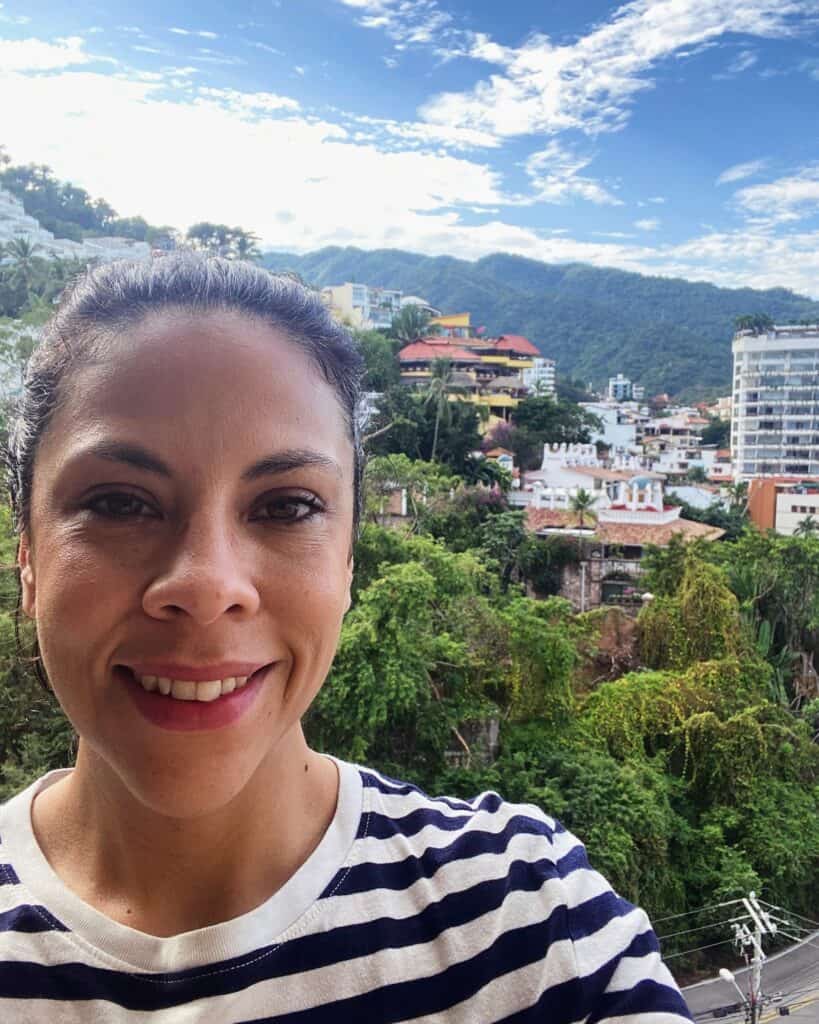
Only on rare occasions will the temperature drop below 60 or rise above 90. With a cool breeze in the air, it’s perfect margarita weather.
It’s a great place to make friends because of the large expat population. There are all types of meetups and regular events scheduled for newbies. The people here are friendly and very accepting of foreigners. I mean, what’s not to like? You bring dollars, and it makes the economy here better. Win-win.
On the weekends and holidays, an influx of Mexican families from Guadalajara will stay for the week. Celebrations are an everyday event here, and noise is normal.
These are NOT the only places we recommend living in. Mexico is a very large country after all and there are dozens of cities that expats call home. To get a complete list of the cities we recommend living in, check out our Ultimate Guide on Best Places to Live in Mexico.
What’s Your Favorite City?
Keep in mind these are not the only cities in Mexico you should consider. There are dozens of great cities across Mexico where expats are calling home these days. Some of them are beaches and some of them are highlands. It’s a very personal decision.
These cities were chosen based on their popularity with expats and the amenities they offer to newcomers. However, your ideal location will be very subjective to your wants and likes.
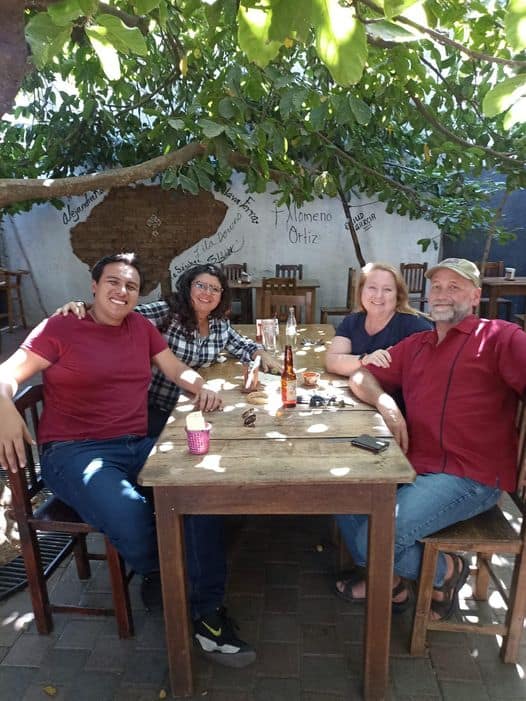
To help you get a boots on the ground approach when thinking of where to live in Mexico, we offer Mexico relocation tours across various cities in Mexico. That way you can rely on a local to help you get a lay of the land, while you sit back and just learn as much as you can about your possible next home.











